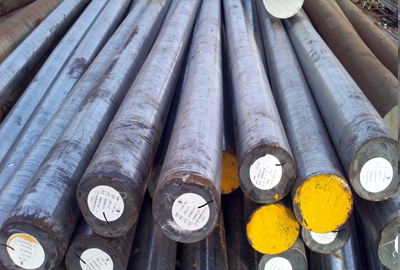Mat.No. 1.7321, DIN 20MoCr4, AISI 8620
Short Description:
Designation by Standards Brand Name Ravne No. Mat. No. DIN EN AISI 20MOCR4 763 1.7321 20MoCr4 20MoCr4KD 8620 Chemical Composition (in weight %) C Si Mn Cr Mo Ni V W Others 0.20 max. 0.40 0.85 0.45 0.45 - - - - DescriptionOne of the most popular and widely used carborizing steels available. 20MoCr4 is a hardenable chromium, molybdenum, nickel low alloy steel often used for carburizing to develop a case-hardened part. This case-hardening will result in good wear characteristics....
Product Detail
FAQ
Product Tags
Designation by Standards
| Brand Name | Ravne No. | Mat. No. | DIN | EN | AISI |
| 20MOCR4 | 763 | 1.7321 | 20MoCr4 | 20MoCr4KD | 8620 |
Chemical Composition (in weight %)
| C | Si | Mn | Cr | Mo | Ni | V | W | Others |
| 0.20 | max. 0.40 | 0.85 | 0.45 | 0.45 | - | - | - | - |
Description
One of the most popular and widely used carborizing steels available. 20MoCr4 is a hardenable chromium, molybdenum, nickel low alloy steel often used for carburizing to develop a case-hardened part. This case-hardening will result in good wear characteristics.
Applications
Gears, shafts and other applications where a hard carborized case and a tough core are desired.
Physical properties (avarage values) at ambient temperature
Modulus of elasticity [103 x N/mm2]: 210
Density [g/cm3]: 7.85
Coefficient of Linear Thermal Expansion 10-6 oC-1
| 20-100oC | 20-200oC | 20-300oC | 20-400oC | 20-500oC |
| 11.1 | 12.1 | 12.7 | 12.9 | 13.5 |
Soft Annealing
Heat to 650-700oC, cool slowly. This will produce a maximum Brinell hardness of 207.
Heat Treatment
| Treatment | Temperature | Cooling |
| Case hardening | 880-980oC | Oil (water), hot bath 160-250oC |
| Carburising | 880-980oC | Oil (water), hot bath 160-250oC |
| Direct hardening | 860-900oC | Oil, hot bath 160-250oC |
| Core refining | 860-900oC | Oil, hot bath 160-250oC |
| Core refining | 780-820oC | Oil, hot bath 160-250oC |
| Tempering | 150-200oC | Air |
Hardenability Diagram
Click the image to enlarge the diagram.
Forging
Hot forming temperature: 1050-850oC.
Machinability
Machining is done prior to carburizing to within as close a tolerance as possible. Finish machining, after heat treatment and/or carburizing, should be at a minimum so as not to impair the hardened case of the part. Machining may be done by conventional means prior to heat treatment – after carburizing machining is usually limited to grinding.
Welding
The alloy may be welded by conventional methods, usually gas or arc welding. Preheating at 200oC is beneficial and subsequent heating after welding is recommended – consult the approved weld procedure for the method used.
Cold working
The alloy may be cold worked in the annealed condition by conventional methods. Cold working, as with machining, should be done to as close a tolerance as possible before heat treatment or carburizing.
Forms manufactured: Please see the Dimensional Sales Program.
Disclaimer
The information and data presented herein are typical or average values and are not a guarantee of maximum or minimum values. Applications specifically suggested for material described herein are made solely for the purpose of illustration to enable the reader to make his own evaluation and are not intended as warranties, either express or implied, of fitness for these or other puposes. There is no representation that the recipient of this literature will receive updated editions as the become available.
FAQ Content
![[0{7)7UAZ(]4W{5TSMC65Q7](https://www.htsteelmill.com/uploads/077UAZ4W5TSMC65Q7.png)






